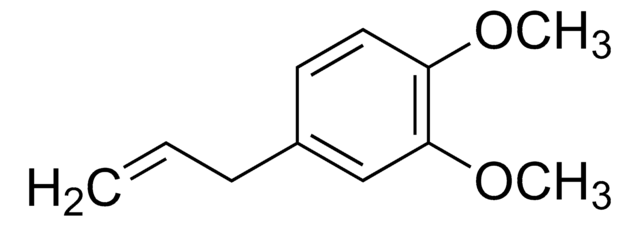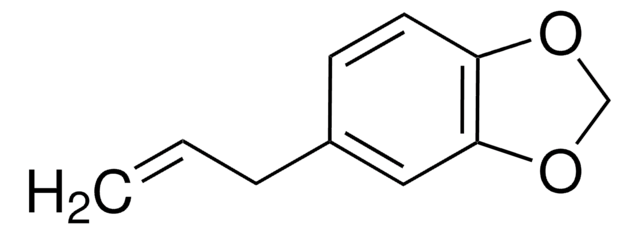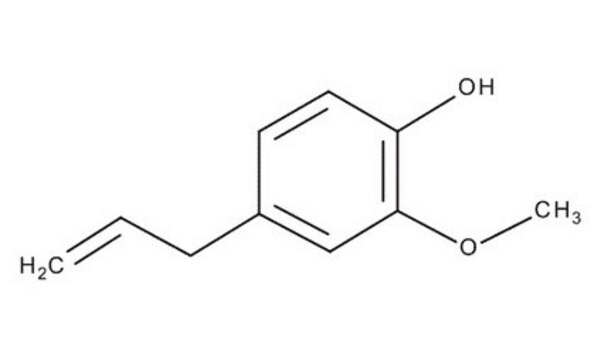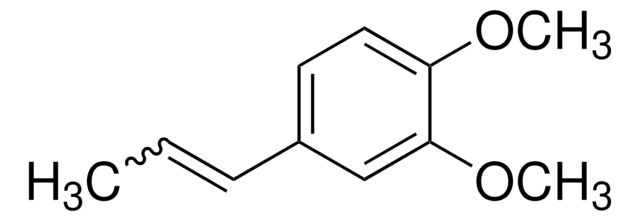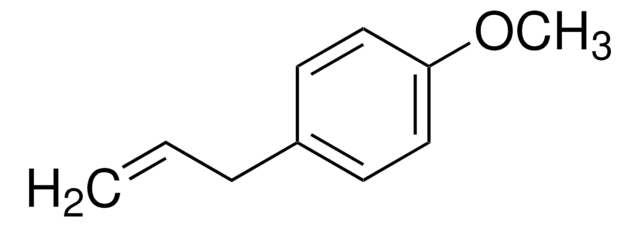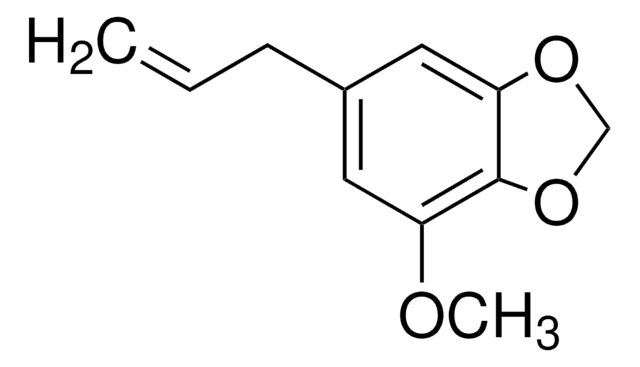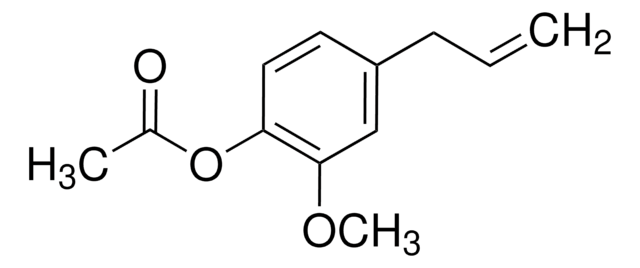W247502
Eugenol methyl ether
≥98%, FCC
Synonyme(s) :
Eugenol methyl ether, 4-Allyl-1,2-dimethoxybenzene, Eugenyl methyl ether
About This Item
Halal
Kosher
Produits recommandés
Source biologique
synthetic
Niveau de qualité
Qualité
Fragrance grade
Halal
Kosher
Agence
follows IFRA guidelines
Conformité réglementaire
EU Regulation 1223/2009
FCC
Essai
≥98%
Indice de réfraction
n20/D 1.534 (lit.)
pb
254-255 °C (lit.)
Pf
−4 °C (lit.)
Densité
1.036 g/mL at 25 °C (lit.)
Application(s)
flavors and fragrances
Documentation
see Safety & Documentation for available documents
Allergène alimentaire
no known allergens
Allergène de parfum
eugenol
Propriétés organoleptiques
cinnamon; clove; spicy; sweet; warm
Chaîne SMILES
COc1ccc(CC=C)cc1OC
InChI
1S/C11H14O2/c1-4-5-9-6-7-10(12-2)11(8-9)13-3/h4,6-8H,1,5H2,2-3H3
Clé InChI
ZYEMGPIYFIJGTP-UHFFFAOYSA-N
Vous recherchez des produits similaires ? Visite Guide de comparaison des produits
Catégories apparentées
Description générale
Application
- Development of broad-spectrum immunoassay with monoclonal antibody to detect five eugenols and study of their molecular recognition mechanism.: This article presents a new immunoassay using a monoclonal antibody designed to detect multiple eugenol derivatives including methyl eugenol, offering insights into their molecular interactions and potential applications in food safety and pharmaceutical analysis (Luo et al., 2024).
Actions biochimiques/physiologiques
Autres remarques
Clause de non-responsabilité
Mention d'avertissement
Warning
Mentions de danger
Conseils de prudence
Classification des risques
Acute Tox. 4 Oral - Aquatic Chronic 2 - Carc. 2 - Muta. 2
Code de la classe de stockage
10 - Combustible liquids
Classe de danger pour l'eau (WGK)
WGK 1
Point d'éclair (°F)
230.0 °F - closed cup
Point d'éclair (°C)
110 °C - closed cup
Équipement de protection individuelle
Eyeshields, Faceshields, Gloves, type ABEK (EN14387) respirator filter
Faites votre choix parmi les versions les plus récentes :
Déjà en possession de ce produit ?
Retrouvez la documentation relative aux produits que vous avez récemment achetés dans la Bibliothèque de documents.
Les clients ont également consulté
Notre équipe de scientifiques dispose d'une expérience dans tous les secteurs de la recherche, notamment en sciences de la vie, science des matériaux, synthèse chimique, chromatographie, analyse et dans de nombreux autres domaines..
Contacter notre Service technique